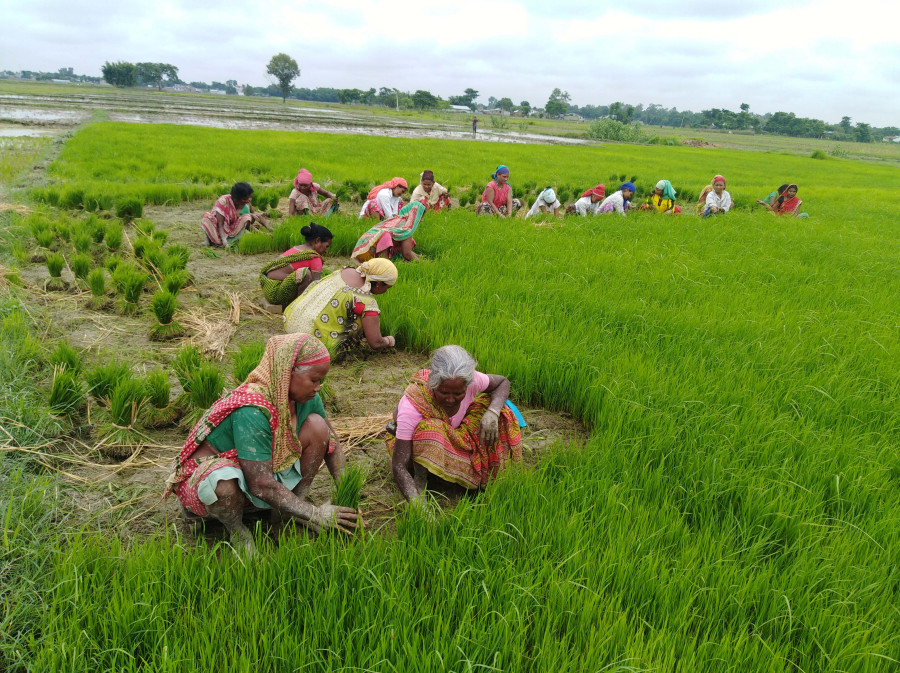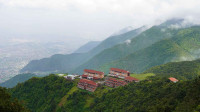Money
Nepal will have to wait a few more days before the rains come down
Delays in the arrival of monsoon is a concern for farmers and economists alike
Sangam Prasain
Nepal will have to wait for a few more days before the heavens open up and the rains come down to water the parched fields. The monsoon delivers 75 percent of the rains that fall annually in the country, and farmers are constantly scanning the skies for the clouds to start pouring so they can plant the all-important paddy crop.
Delays in the arrival of the monsoon is not only a concern for farmers. The Nepali economy is heavily dependent on the agriculture sector, and farming activities will get delayed right from the sowing of seeds to the transplanting and harvesting. The monsoon is the lifeblood of Nepal’s Rs3-trillion economy as nearly two-thirds of the farmlands are rain-fed.
Archana Shrestha, spokesperson for the Department of Hydrology and Meteorology, told the Post that this year’s monsoon would be late. The normal onset date of the rains is June 10. It takes a week to spread throughout the country and lasts till September 23. “We see a delay of nearly a week for the monsoon to start this year. By Friday, we will know the expected day of its arrival,” she said. “The late arrival of the rains means that farmers, particularly in the hilly region, should be well prepared.”
Paddy transplantation in the hilly region normally begins in early June because a late transplantation means the crop could be exposed to the cold winter without the sun, and that can significantly affect productivity.
Last year, the monsoon entered Nepal from the east on June 8, two days ahead of schedule. The normal monsoon continuing throughout the four-month season yielded a bumper summer crop that led the country on a higher economic growth path. Nepal’s agriculture sector is expected to grow 5.1 percent in the current fiscal year, a sharp rise from its 2.7 percent growth rate in the last fiscal year. The increase has been attributed to the better-than-expected monsoon last year.
Nepal’s paddy harvest is expected to hit a record high of 5.61 million tonnes, up 9 percent from the previous year, according to the Ministry of Agriculture and Livestock Development. Ministry officials said that the good monsoon increased paddy productivity by 3.76 tonnes per hectare. As a result of the good harvest, the country’s economy is projected to grow 7 percent this fiscal year ending mid-July. According to Shrestha, the southwest monsoon sweeps in from the Arabian Sea and makes landfall in Kerala, India before heading east and north towards Nepal. The monsoon was expected to arrive in Kerala on June 1, but it got delayed by a week and only reached the Indian coast on Saturday.
“The entry of the monsoon rains in Nepal is being delayed due to unfavorable weather conditions in the the Bay of Bengal,” said Shrestha. “A cyclonic circulation over the Arabian Sea has hindered progress of the monsoon.” Though the Arabian Sea branch of the southwest monsoon supports the Bay of Bengal branch, the low pressure will weaken the monsoon current and may delay its onset in Nepal, she said. Soil scientist Satya Narayan Mandal said, “It is too early to predict what impact the delayed monsoon will have on the agriculture sector, but any delay in the arrival of the monsoon is a cause for concern. Farmers sow their seeds during this time, and transplantation will begin once the monsoon becomes active,” he said, adding that a water deficit is always a big concern during the four-month paddy cultivation cycle.
Past data has indicated a positive correlation between the actual rainfall and the growth rate of the agriculture sector. The country has witnessed a normal monsoon for three consecutive years, propelling the country to record growth rates of over 6 percent three years in a row. In the fiscal year 2016-17, the country’s gross domestic product expanded by 7.74 percent, the highest since fiscal year 1993-94. An above-normal monsoon recorded in 2016-17 helped Nepal secure the biggest paddy harvest which jumped 21.66 percent to 5.23 million tonnes, bucking the trend of two consecutive years of falling harvests triggered by drought.
The economy grew by 6.3 percent in the following year 2017-18, according to the Central Bureau of Statistics. In 2017-18, Nepal’s paddy output totalled 5.15 million tonnes, down 1.49 percent from the 2016-17 bumper harvest, mostly on account of the August floods in the southern Tarai plains, known as the country’s food basket. But the harvest was still the second biggest despite the damage caused by the inundation.
The monsoon rains are expected to be ‘below normal’ in Nepal’s key crop producing regions this year, according to the report of the South Asian Climate Outlook Forum, dampening prospects of higher farm output after three consecutive years of robust economic growth driven mainly by the farm sector. South Asian experts said Nepal’s monsoon rainfall was likely to be a mix of two patterns this year—below normal in Provinces 1, 2, 3 and 5 and normal in other provinces, according to the consensus statement of the 14th session of the South Asian Climate Outlook Forum released last month.
But weathermen said it was not a worrying sign as below normal usually does not mean a drought-like situation. The below normal rainfall factor depends on the time of rainfall and paddy planting time.




 5.14°C Kathmandu
5.14°C Kathmandu















